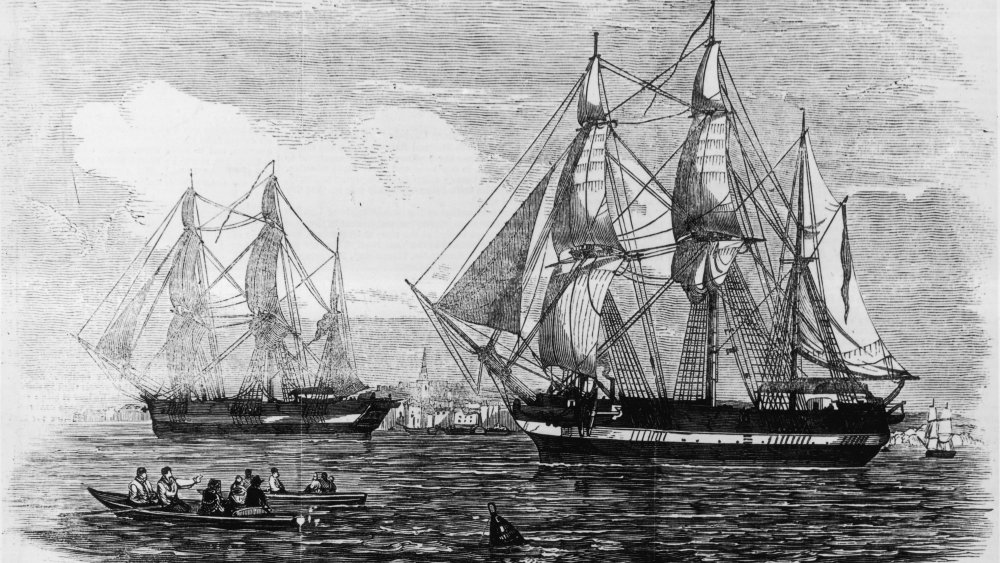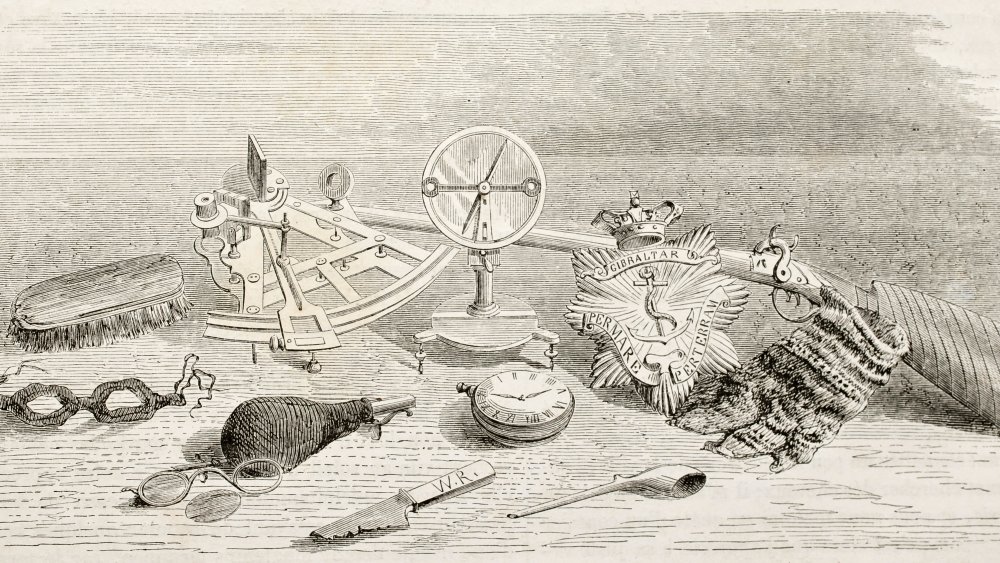What Really Happened To The Franklin Expedition
Per the Parks Canada website, Sir John Franklin sailed from England in 1845 with two ships, the HMS Erebus and the HMS Terror. According to the Canadian Encyclopedia, he was already known for his part "in several high-profile expeditions to the Canadian Arctic that mapped large stretches of unknown coastline." The intent of his 1845 expedition was to complete Britain's exploration of the Northwest Passage. The "best-equipped and most technologically advanced Arctic expedition to that date" set sail on May 19 with a crew of 134 men and enough provisions to last three years. Despite the planning and care that went into preparing for the journey, the boats disappeared just two months later. The Canadian Encyclopedia notes that whaling boats last spotted the ships sailing into the Baffin Bay on July 26, 1845, while Parks Canada reports that "the ships and crew were last seen by Inuit on King William Island and never returned to England."
A National Geographic interview with Paul Watson, author of Ice Ghosts: The Epic Hunt for the Lost Franklin Expedition, detailed the campaign led by Franklin's wife Jane to find the lost expedition, which turned into "the longest, broadest and most expensive search for two lost ships in maritime history." The search was unsuccessful and the fate of John Franklin and his crew was unknown until 2014.
Almost perfectly preserved
As National Geographic relates, an Inuit man, Louie Kamookak, made possible the discovery of the missing expedition. Kamookak remembered hearing stories as a child from a local woman who had found items such as a butter knife and rifle casings. As an adult, he realized the items might be connected to the Franklin expedition and researched Inuit oral history to find more possibly related stories that might indicate where the ships had disappeared. At the same time, archaeologists and historians were doing their own research.
In 2014, the Canadian government sponsored the Victoria Strait Expedition. According to Canadian Geographic, this was "the most ambitious search for the lost ships of the Franklin Expedition to date." An "unprecedented number of public and private organizations [came] together to search for artifacts ... exploring the sections of seabed where the ships were last seen for the first time." Watson told National Geographic that during this expedition, "H.M.S Erebus was discovered in relatively shallow water and almost perfectly preserved, except for the stern, which had been bitten away, probably by ice." Furthermore, we now know that Franklin died on the ship "because a note was found saying he died before the ships were abandoned." Parks Canada reports that the area in which the expedition found the Erebus had been previously identified by Inuit people; the expedition found the other missing ship, H.M.S. Terror, two weeks later. The ships are contained within a National Historic site co-managed by Inuit and Parks Canada.

